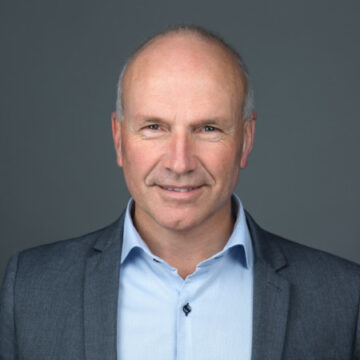“Since we as humans have been able to make fire, we have been tapping into our earth’s reserves. It started innocently with dried grasses and wood. Then we set fire to peat and started digging for coal. Until we reached the rich layers of oil and gas. Now that we realize that burning millions of years of stored solar energy is finite – but has infinite effects on climate and nature – we will have to be smarter about energy. We cannot separate this from the circular economy. Because it requires even more energy.” Kees Biesheuvel shares his vision on the energy transition.
When Kees is thinking of the earth, the first that comes to mind are the gigantic storage tanks in the Botlek. Kees: “An image starts off quite well, but it actually ends quite dramatically. Let me finish the metaphor: when we look at the tank in Botlek, we see that it is filled from the top with a garden hose, while the liquid flows out at the bottom through a large pipeline. In today’s energy system, the garden hose represents the tiny bit of renewable energy we are adding to the energy mix. The pipeline represents our growing energy consumption. Everyone understands that the balance in the tank is greatly disturbed. If we don’t act quickly, the bottom is in sight.”
Why circularity requires extra energy
The good news is, more and more people are starting to recognize that we need to move towards a different energy model. Luckily, there’s also an increased amount of proven technologies that can help us to make this happen. Yet, Kees thinks the road will not be easy. Because in addition to the energy transition, we will have to make the shift to a circular economy. “It is not only our current energy sources that are at risk, because at the same time, we are dealing with the depletion of raw materials. And precisely this circular mode of production requires extra energy.”
Nobody oversees this complex system on their own
Kees Biesheuvel
From order to chaos
He continues: “In the fossil economy, we were in the front row for just a dime. What I mean, is that thanks to high-energy sources (such as petroleum and natural gas), we were able to get the best results, with relatively little effort. We were handed the building blocks – for example plastics – on a silver platter. In the circular future, this order will make way to chaos. I imagine there will not be such a value chain but rather a value branching: one raw material leads to a range of semi-finished and finished products. We have to separate and bundle all those ramifications after use, and that will cost extra energy. Perhaps even double the energy than that we were used to in the fossil economy.”
What do other ISPTers think of the transition?
“Leverage today’s crises for tomorrow’s transition” – Annita Westenbroek
Stop using electrical energy for heat
All-in all, this means that our demand for energy is rising sharply. Kees: “We will have to do our best to generate that extra energy by sun and wind. This is the challenge we are now facing in Europe. A challenge in which we can no longer afford to let energy drain away. We will have to link the right form of energy to the right use and make use of every residual stream. As a theoretical physicist, I know that it is very inefficient to turn electrical energy into heat. I am also aware of the law of conservation of energy: in a closed system, the total amount of energy remains intact. The crux, is to create such closed systems and to link the right source to the right use in them.”
From molecules to system integration: how to solve the puzzle
“At ISPT, I am working on the issue of creating such a sustainable, circular system. We do this by zooming in and out. Quite literally. So we focus on the very smallest things, such as separation technologies at the molecular level. But we also focus on the very largest and do research into system integration: how do we organize the energy transition in the Netherlands in a smart way? This is an enormous puzzle in which everything is connected to everything else. Which is why this is a task that we can only tackle in partnerships. Nobody oversees this complex system on their own. We can only close the loop in cooperation.”
More on Kees Biesheuvel
Within ISPT, we work with what we call Biesheuvel’s First Law, named after our brilliant Program Director Heat and Technology. Biesheuvel’s First Law says that electrification is always in the money. When you have the privilege to talk to Kees, make sure to ask him about it. He will passionately explain it. Kees is also Innovation Manager at Dow Benelux.

